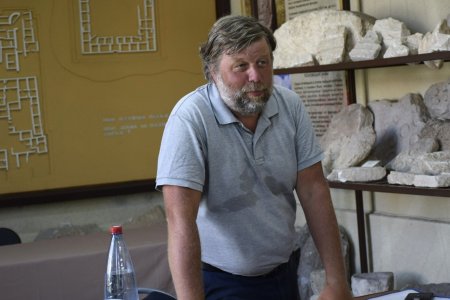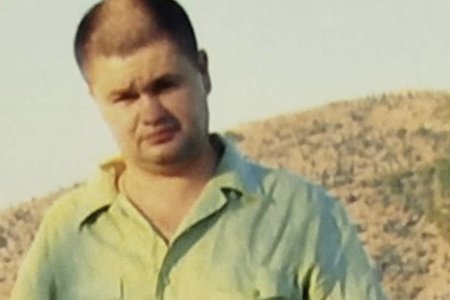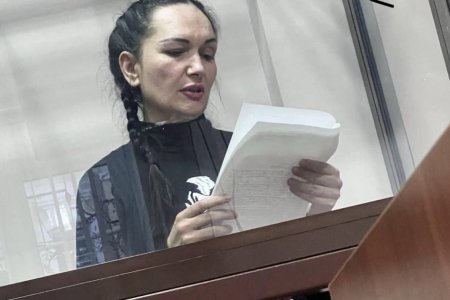
Russia is shortly to open something that it calls a ‘historical-archaeological park’ on territory directly linked with the Ancient City of Tauric Chersonese and its Chora, a UNESCO World Heritage site in occupied Crimea. While banal corruption is doubtless also at play, the massive complex on what was a suburb of the ancient city is also aimed at rewriting history in order to justify Russia’s illegal occupation of Crimea by attributing historical links that it does not have. The claim that this is an ‘archaeological park is also immensely cynical since the complex was erected after heavy bulldozers were let loose on an archaeological site with a cultural layer of up to 10 metres.
As reported, Russia’s link with Crimea only began with its first land-grab in 1783, but it has long and aggressively sought to push back the clocks by almost a thousand years. Russian propaganda is full of claims about Chersonese being the “Russian Pompei” and “Russian Troy”, with Russian leader Vladimir Putin’s talking in 2014 of ‘sacred Crimea’. Russian narrative has systematically ignored the grounds for disputing Moscow’s claim that Volodymyr the Great was baptised in Chersonese and will almost certainly gloss over, or positively deny, the previously undisputed fact that the mass baptism marking the Christianization of Kyivan Rus in 988 took place in Kyiv.
It was Putin who first publicly proposed a ‘historical-archaeological park’ in 2015, although the former KGB agent may have been prompted to do this by his supposed Russian Orthodox ‘spiritual mentor’, Tikhon Shevkunov, who has, since 2023, been the Russian-installed ‘Simferopol and Crimean Metropolitan’. Tikhon clearly shares Putin’s ‘Russian world’ views and, judging by the play he prepared for Putin’s visit to Chersonese in August 2019, pushes a view of ‘the history of Crimea and Chersonese’.
The plan for this complex was approved in 2017. Active ‘construction’ work began in 2021, with Vladimir Medinsky, Putin’s aide and the head of the Russian Military History Society, claiming in August that year that this would be “a world-level museum which would be visited from all over the world”. It was clear even then that the only possible result of such barbaric treatment of this unique ancient site would be that UNESCO would cancel its World Heritage site status.

It was claimed that the land used for the ‘park’ is 23 hectares which are adjacent to the Chersonese ruins, and that the land was ‘handed over’ for this purpose by Russia’s defence ministry. In her report on Russia’s destruction of Chersonese, Evelina Kravchenko, a senior fellow at the Ukrainian National Academy of Sciences Institute of Archaeology, points out that construction of this so-called ‘New Chersonese’ was on the site of a suburb of the ancient city of Chersonese. This resulted in the destruction of 80 thousand m² of the World Heritage Site, a cultural layer containing the remains of an ancient temple, the city necropolis with unique burial and memorial structures, and more. The land in Sevastopol was first under Soviet military control, then Russian, which was the reason that full archaeological investigation had earlier been blocked.
In order to implement Putin’s grandiose plans for Chersonese, a Russian ‘expedition’ was carried out, with this claiming to have begun and finished a massive amount of excavation work in just seven months. This appears to have been primarily a way of rubberstamping the ‘New Chersonese’ plans, with obliging Russian ‘experts’ used to claim that there was nothing of archaeological interest on the land earmarked for the new complex. Thousands of archaeological finds were illegally sent to Russia, however, since bulldozers and excavators were used, it is unsurprising that many archaeological treasures were either dumped or found by local residents and may well end up on the black market. The heavy construction work began in full swing, with Russia’s defence ministry as general contractor.
The so-called ‘New Chersonese’ is a glossy, anachronistic fake, with fountains, lawns, Chinese bridges and a domed temple. This was a project personally overseen by Putin and Tikhon Shevkunov, with the Russian Orthodox Church’s ‘My History’ Foundation officially managing the project.
Some of the archaeological collections from the real Chersonese reserve are to be moved to this fake ‘New Chersonese’, while all of the old museum buildings, dating back to the nineteenth century have been ‘given’ by the occupying state to the Russian Orthodox Church.
![Photo posted by the Russian-installed ’governor’ of Sevastopol Mikhail Rozvazhaev of the ]historical-archaeological museum’](https://khpg.org/files/img/1608821439.jpg)
The complex was built at record pace and trumpeted at Russia’s so-called ‘international economic forum’ in St Petersburg in June 2024. German Gref, the head of Sberbank, one of the ‘sponsors’ of the project, falsely claimed that “in a place where there was nothing, a totally amazing complex has been born which will certainly attract millions of people a year”.
Kravchenko points out that ‘restoration’ in contemporary Russia has not developed from the old Soviet approach which concentrated on ‘looking nice’, rather than preserving the building’s authentic appearance. She notes that, in destroying the suburb of the city to create their ‘New Chersonese’ park, the Russians did reconstruct two buildings – the sanctuary, or heroon, and the temple. Sergei Solovyov, the so-called archaeologist behind their ‘research’ boasted in an interview to a propaganda channel that they had rebuilt these “better than the Greeks”!
Concerns about the aggressor state’s treatment of Chersonese arose long ago, with Russia erecting ‘observation platforms’, leaning metallic structures against the walls of the ruins, and staging various ‘events’, with lights, electricity, etc. on its territory. There were warnings, public appeals, and even a civil suit over the danger to the ruins from the heavy machinery and constructions being erected, as well as the booths and other measures to ‘popularize’ the place.
While ‘events’ at Chersonese for Putin & Co. with lights and special efforts may have been no more than cheap propaganda stunts, the ‘My History’ Foundation was quite clear about the political propaganda objectives for the ‘historical-archaeological’ park. .
“Implementation of the above program will assure the flow to Crimea of numerous pilgrims and tourists from all over Russia and countries of the ‘near’ and ‘far abroad’. It will give a powerful impulse to the development of Sevastopol and all of Crimea; will make it possible to turn this most important region into a spiritual, cultural and scholarly-educational centre of the south of Russia [sic]. Widespread public representation of Chersonese as a national, sacral centre of Russia will make it possible to form in the international information field a clear and unequivocal understanding of the fundamental significance of Crimea as the historical baptismal font and inalienable part of the Russian state”.
See also: Russia vandalizes and plunders UNESCO World Heritage site at Chersonese in occupied Crimea



